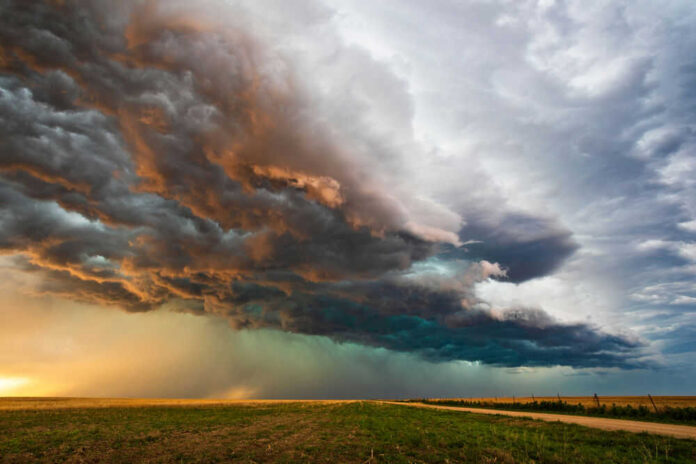
As record-breaking floodwaters devastate remote Alaskan communities, the urgent question emerges: are government priorities and resource allocation truly protecting American families, or are rural citizens left behind in moments of crisis?
Story Snapshot
- Remnants of Typhoon Halong shattered flood records, wiping out dozens of homes and displacing over 1,400 residents in Western Alaska.
- Emergency responders rescued at least 51 people from life-threatening floodwaters in the hardest-hit villages.
- One person was confirmed dead and two remain missing, while officials admit the full damage assessment is still incomplete.
- The intense storm surge exposed vulnerabilities in rural infrastructure and raised concerns about disaster preparedness under past administrations.
Record Flooding Leaves Alaskan Villages in Crisis
This week, the remnants of Typhoon Halong unleashed catastrophic flooding across Alaska’s Yukon-Kuskokwim Delta, with hurricane-force winds and storm surges breaking previous records by nearly two feet in some locations.
Villages like Kipnuk and Kwigillingok bore the brunt of the devastation, as floodwaters swept homes off their foundations and forced families to seek shelter in overcrowded community centers.
This event stands as one of the most severe weather disasters in recent Alaskan history, highlighting the acute vulnerability of America’s remote communities.
Two Alaskan villages were destroyed by remnants of a powerful typhoon that swept homes off their foundations, killing at least one person and displacing more than 1,400 people. https://t.co/zaQnosbA78
— NBC News (@NBCNews) October 15, 2025
Emergency response teams, including the U.S. Coast Guard and Alaska National Guard, quickly mobilized to rescue at least 51 people from the hardest-hit areas, pulling survivors from rising waters in the dead of night. Despite these efforts, the crisis has left one woman confirmed dead in Kwigillingok, with two others still missing.
The rescue operations have been compared to the aftermath of Hurricane Katrina, underscoring the profound human toll and the challenge of mounting effective responses in isolated regions.
State officials have described the psychological trauma and fear experienced by residents as “very scary — very, very scary — for folks,” emphasizing the need for both immediate and long-term support.
Infrastructure Wiped Out, Recovery Faces Steep Hurdles
The destruction of dozens of homes and essential infrastructure has created an immediate humanitarian emergency. Over 1,400 residents—more than the population of some small towns—are currently displaced and residing in temporary shelters.
In communities where access is often limited to air or water routes, the logistical difficulties of delivering aid and rebuilding are immense.
The cost and time required to restore even basic housing and services far exceed those of road-connected areas, straining already limited resources and testing the resilience of local populations.
Officials have acknowledged that the full scope of the damage is still unknown, with ongoing assessments revealing the scale of the catastrophe. The concentrated impact on specific villages, unlike the more dispersed effects seen in previous storms like Merbok in 2022, threatens to overwhelm both local and state capabilities.
The destruction not only disrupts the daily lives of survivors but also raises questions about the long-term economic and psychological impact on subsistence-based communities where self-reliance is a way of life.
Government Response and the Need for Conservative Priorities
State and federal officials have pledged sustained support for recovery, promising aid “not just today, tomorrow, but weeks and months on.” However, this latest disaster reignites debate about federal disaster preparedness and the allocation of American tax dollars.
While past leftist administrations have often prioritized pet projects, globalist agendas, and reckless spending, it is essential that resources now be directed toward safeguarding American families and upholding the foundational values of self-reliance and community protection.
The storm’s devastation serves as a stark reminder of the importance of constitutional principles—limited government, strong borders, and the prioritization of American citizens’ well-being.
As recovery efforts unfold, conservatives will be watching closely to ensure that relief reaches those in need efficiently and without bureaucratic delay, and that policies moving forward reflect a renewed commitment to protecting America’s heartland.
The resilience of these Alaskan communities deserves both respect and effective support, free from the distractions of woke agendas and government overreach.
Expert Analysis: Unprecedented and Alarming Trends
Meteorological experts have confirmed the historic nature of this event, with water levels at Kipnuk reaching 6.6 feet above normal high tide—almost two feet higher than the previous record set in 2000. Such unprecedented surges expose critical weaknesses in existing infrastructure and disaster response systems.
While some blame shifting climate patterns, the acute impact on rural Americans makes clear that robust local preparedness and conservative stewardship of national resources must be prioritized over political grandstanding.
Limited data remains on the full economic toll and the status of federal disaster declarations, but what is certain is the need for vigilant, common-sense governance that puts Americans first.
Sources:
Officials say storm completely devastated Western Alaska communities
Typhoon Halong remnants storm surge floods Alaska coastal villages















